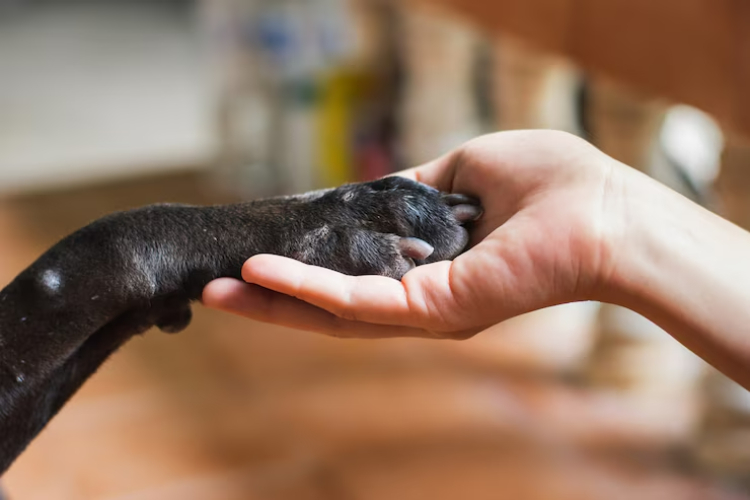Training a stray dog comes with its own set of unique challenges, but with patience, consistency, and the right approach, you can transform a feral dog into a loyal companion. Whether you’re adopting a stray from the streets or a shelter, understanding their specific needs is key to building a trusting relationship. This guide will walk you through the essentials, from preparing for training to overcoming common challenges, and help you turn a stray dog into a well-behaved, happy pet.
Understanding Stray Dogs
Stray dogs are no different from any other dog at their core they crave safety, companionship, and care. However, life on the streets has shaped their behavior in ways that require special attention.

Instinctive Adaptations:
Strays have honed their survival instincts due to prolonged exposure to harsh environments. These instincts often manifest as heightened anxiety, fear, or resource guarding.
Not Malicious by Nature:
Stray dogs are not inherently aggressive. In most cases, their behavior stems from past trauma, fear, or mistrust. It’s essential to understand that strays respond to kindness, patience, and positive reinforcement.
Unique Training Requirements:
Unlike pet dogs, strays have likely never been exposed to structured training, which means they may be unfamiliar with basic commands, boundaries, or socialization. It’s crucial to approach their training with sensitivity.
Potential Health and Behavioral Issues:
Many strays may have untreated medical conditions or behavioral problems stemming from neglect. Before beginning any training, it’s vital to ensure their health and well-being.
Don’t Miss Can Dogs Eat Sherbet? A Comprehensive Guide
Preparing for Training
Setting up a safe and comfortable environment is the first step in preparing for successful training.
Health Check:
Take your stray dog to a veterinarian for a thorough check-up. Ensuring your dog is free from any underlying medical issues will give you peace of mind and prevent health-related behavioral problems during training.
Create a Safe Space:
At home, set up a designated area for your new dog. This should include a comfortable bed, toys, food, and water. This space will serve as a sanctuary where your dog can feel safe and relaxed.
Establish a Routine:
Dogs thrive on routine, and strays are no exception. Set regular times for feeding, bathroom breaks, and walks. This will help with toilet training and give your dog a sense of predictability.
Positive Reinforcement:
Begin with gentle, positive reinforcement training. Use treats, praise, and toys to reward good behavior. Stray dogs are often distrustful, so building trust through kindness is essential in the early stages.
Seek Professional Help:
If you’re struggling to train your stray or dealing with challenging behaviors, consider enrolling in a training class or hiring a professional dog trainer. Personalized guidance can make a big difference in how quickly your dog adapts.
Building Trust and Foundation
Earning the trust of a stray dog can take time, but it’s a crucial part of the dog training process.

Start with Basics:
Assume your stray has never been trained before, so begin with fundamental obedience commands such as “sit,” “stay,” and “come.” Keep these lessons short and sweet to avoid overwhelming your dog.
Use High-Value Rewards:
High-value treats like small bits of meat or cheese are great motivators for stray dogs. Pairing these with praise will help reinforce positive behavior.
Establish Boundaries:
Set clear rules and boundaries for your dog from the start. Knowing what’s expected of them helps stray dogs feel secure and can reduce anxiety.
Gentle Interactions:
Always approach your stray gently. Sudden movements or loud noises can trigger fear responses, so keep your tone calm and your body language non-threatening.
Patience is Key:
Building trust takes time, especially for a dog that’s spent a significant amount of time fending for itself. Remain patient, and don’t rush the process.
Advanced Training and Socialization
Once your stray dog is comfortable with basic commands, it’s time to move on to more advanced training and socialization.
Teach Core Commands:
Reinforce the core commands of “sit,” “stay,” “come,” and “heel” using positive reinforcement. Consistent practice is important to solidify these commands.
House Training:
Potty training should be a priority. Establish a bathroom routine and reward your dog every time they go outside to do their business. Consistency is the most important aspect of house training.
Socialization with Humans and Animals:
Strays may not have had much interaction with people or other dogs. Start slow, introducing your dog to new environments and people in calm, quiet settings. Gradually increase exposure to different situations, ensuring your dog remains comfortable and confident.
Chew Training:
Provide chew toys and teach your dog what’s acceptable to chew on. This will prevent destructive behavior and keep your dog mentally stimulated.
Ongoing Care and Development
Training doesn’t stop after a few weeks—it’s an ongoing process. Here are some tips for ensuring long-term success.
Stability is Crucial:
Continue to provide a stable environment with regular routines. This helps your dog feel safe and reduces anxiety.
Crate Training:
Crate training can be an effective way to reinforce potty training and provide your dog with a safe space when you’re not home. Make the crate a positive place with comfy bedding and toys.
Exercise and Mental Stimulation:
Regular walks and playtime are essential for your dog’s physical and mental well-being. Engaging toys and puzzle feeders can keep your dog entertained and prevent boredom-related behaviors.
Addressing Behavioral Issues:
Some stray dogs may develop behavioral issues, such as separation anxiety or resource guarding. Gentle, consistent training, paired with professional guidance if needed, can help overcome these challenges.
Common Challenges and Solutions
Training a stray dog is not without its difficulties, but with the right approach, you can tackle these challenges.
Separation Anxiety:
Stray dogs often suffer from separation anxiety due to past abandonment. To ease their fears, create a safe space where they can retreat to when you’re not home. Gradual separation can help desensitize them to being alone.
Fear-Based Behaviors:
Fear-based behaviors such as cowering, barking, or even aggression can be managed through gentle exposure to the things that scare your dog, paired with positive reinforcement when they remain calm.
Resource Guarding:
Teach commands like “drop it” and “leave it” to manage resource guarding. Reward your dog for giving up items they might be possessive over.
Housebreaking Issues:
Establishing a consistent routine for bathroom breaks will solve most housebreaking problems. Reward your dog every time they go outside.
Lack of Socialization:
Overcoming a lack of socialization takes patience. Introduce your dog to new people, animals, and environments gradually, ensuring they remain relaxed and positive during interactions.
Conclusion
Adopting a stray dog can be a rewarding experience for you and the puppy. Whether you choose a puppy or an adult dog, it’s crucial to understand that the dog is going to need time to adjust. By using proper training techniques and engaging in obedience training, you can help your new rescue dog learn to sniff out their surroundings and become comfortable at home.
Remember, it’s essential to leave the dog on a leash during walks until they are used to living in their new environment. With consistent supervision and eye contact, you can build your dog’s trust and create a strong bond. It may take a little time to train, but the love and affection you give will go a long way in ensuring a happy relationship.
As you take your dog on adventures, allow them to roam around safely and engage with other dogs. This is where basic training comes into play, helping them learn to tug on their leash and respond to commands. Whether you’ve adopted a dog from an animal shelters or rescued one from animal control, your affection will help them thrive.
By following a structured training program and possibly consulting a behaviorist, you can ensure that your new pup becomes a well-adjusted member of your family. Remember that every dog, whether purebred or not, deserves a loving home where they can grow and learn.







